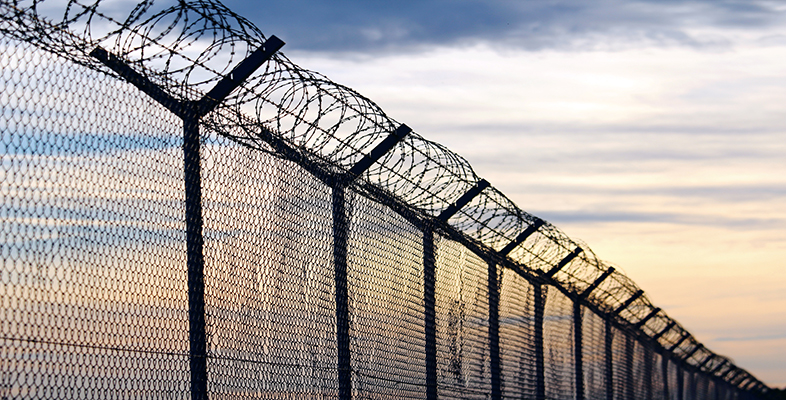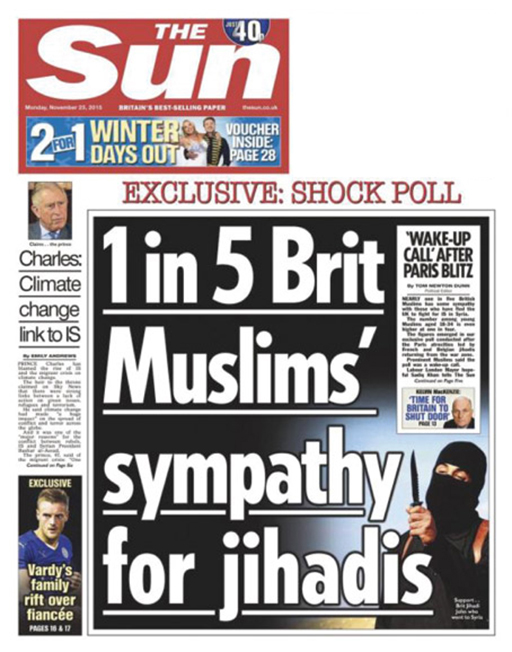4.6 ‘Reconfiguring security and liberty’
Some researchers have begun to focus their attention on the consequences of an increasing focus on security. They argue that more areas of social life are being seen as ‘security’ issues (a process known as securitisation). Securitisation can be seen to occur in many places and contexts, but in this section, we will focus on a UK context.
Pantazis and Pemberton (2012) have discussed the development of what they see as an ideology of ‘new terrorism’. According to these writers, both Tony Blair and David Cameron accepted that this new form of terrorism was religiously rather than politically motivated ‘with Islamic fanaticism presented as the greatest threat facing liberal democracies’ (p. 655). In the wake of the 2005 London Underground bombings (often referred to as ‘7/7’) which killed 56 people, the threat was portrayed as being so serious that it was used to justify a wide range of new anti-terrorism measures.
Pantazis and Pemberton argue that ‘“new terrorism” provides the perfect narrative template for the “politics of fear”’ (2012, p. 656). The security service and police frequently reiterate the message that there are hundreds of dangerous terrorists at large and that security measures can never be sufficient to guarantee protection against attack. This helped to justify the 2005 Prevention of Terrorism Act in the UK, which significantly increased the surveillance powers of the security services. Furthermore, the sense of an ongoing crisis has persisted ever since fuelling an appetite for relentless increases in security.
Pantazis and Pemberton go on to describe a number of studies of the media (such as Hickman et al. 2010, cited in Pantazis and Pemberton, 2012) which have identified a dominant discourse in the media attributing the ‘new terrorist threat’ to Muslim communities. These communities have been portrayed as being suspect for lacking ‘British values’.
Research by Moore et al. (2008, cited in Pantazis and Pemberton, 2012) found that four-fifths of newspaper content about Muslims/Islam was framed in terms of problems, threats or a lack of British values. As a consequence, ‘the ‘commonsense’ appeal that those that are not ‘with us’ are ‘against us’ and should forego their civil liberties would appear to be a perfectly rational position’ (Pantazis and Pemberton, 201, p.659). It can also be argued that such discourses encourage individuals to become directly involved in looking out for terrorists adding to the surveillance of Muslims, and further reinforcing the processes of ‘othering’. In comparison, there is little attempt, for example, to encourage individuals to be on the look-out for evidence of air pollution in order to report it to the authorities. Yet recent research estimates that some 40,000 premature deaths each year in the UK are attributable to air pollution (Coombes, 2017) whereas there have been just 54 deaths in total (excluding perpetrators) as a result of terrorism in Great Britain between 11 September 2001 and 31 March 2016 (Allen and Dempsey, 2018).
Activity 9 The media and harm: othering and the ‘War on Terror’
Drawing on Figure 12 and the summary of the work of Pantazis and Pemberton, suggest answers to the following questions.
- How does the media contribute to the ‘othering’ of Muslim communities in the UK?
- Suggest some potential negative consequences of the ‘othering’ of Muslims in the media and the discourse which emphasises Muslims as being security threats.
Discussion
- You may have given a number of responses to this question; the following are just some of the possible conclusions you may have drawn. Figure 12 illustrates how media coverage may make stereotypical or even contrived generalisations about Muslims using images to reinforce a sense of threat (the showing of the masked person with a knife emphasising the apparently immediate and serious nature of the supposed threat). The statistical data appears to provide strong justification for the ‘othering’, but the statistics could just as easily be presented to emphasise that only a relatively small minority of Muslims express any sympathy for ‘jihadists’. This reinforces the studies cited by Pantazis and Pemberton, which found that coverage of Muslims/Islam was very often framed in terms of ‘problems’, in terms of opposition to ’British values’ and in terms of a ‘new terrorist threat’. The Sun front page also constructs a link between the attacks in Paris and British Muslims, implying that Islam is a global threat and all Muslims could be seen as being suspect. (You should note that this front page received considerable criticism after it was published, and that IPSO also ruled that the coverage was significantly misleading (IPSO, 2016).)
- As in question 1, you may have made many different suggestions about the possible consequences of this ‘othering’. Figure 12 might have made you think about the possibility that dominant discourses about terrorism might encourage Islamophobia (fear and hatred of Islam). Perhaps you considered the possibility that ‘othering’ might result in increased divisions between Muslim and non-Muslim communities reinforcing mistrust and potentially amplifying Islamophobia. You could have linked the possibility of increased Islamophobia to inequality by suggesting that discrimination might reduce opportunities, such as employment opportunities, for Muslims. The discussion of the work of Pantazis and Pemberton may have made you think about increased numbers of arrests and detentions of Muslim terrorist suspects, and more people (particularly Muslims) being monitored through electronic surveillance. You might also have considered how the general fear of the ‘new terrorism’ is linked to the increasingly visible security in public places (for example the increased presence of armed police at airports, important public buildings and elsewhere, increased security measures at public events). You could have thought about the way in which the erosion of civil liberties is justified as being acceptable as a way of countering perceived ‘threats’ which in turn makes it difficult to challenge abuses of power by the state. These might all be considered to be consequences of the ‘othering’ of Muslims.

